Director’s Message
CADRRE also opened its doors to welcome back our students to school on the 24th of November 2021 after a long break from physical classes for almost two years. The team at CADRRE worked diligently on activities and exercises to make this transition easier for students. This included sessions on social distancing, wearing a mask and the new modes of operating in a pandemic-stricken world.CADRRE is envisioning a project dedicated towards showcasing and celebrating the special talents of individuals on the spectrum called The Artism Studio. Through this project the students will have avenues to take their art and craft to a larger audience. Through the sale of every artwork, students earn royalties and learn to appreciate the value of financial independence. As the first step towards this project, we supplied cloth bags showcasing a drawing made by one of our student artists to SunTec Business Solutions. We plan to come out with more such functional gifts and artworks from our student artists in future.I would like to take this opportunity to thank our donor patrons SunTec Business Solutions, UST Global and donor Vishal Nevatia of True North for their continued support. Thank you for being a part of our journey and we look forward to continuing to share all the exciting news with each of you.
– G. Vijaya Raghavan,Hon. Director, CADRRE
Employability Training Program for Young Adults with Autism supported by SBI Card
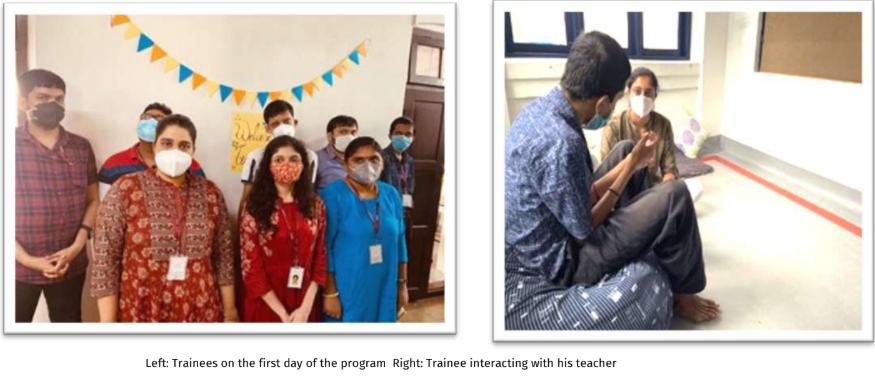
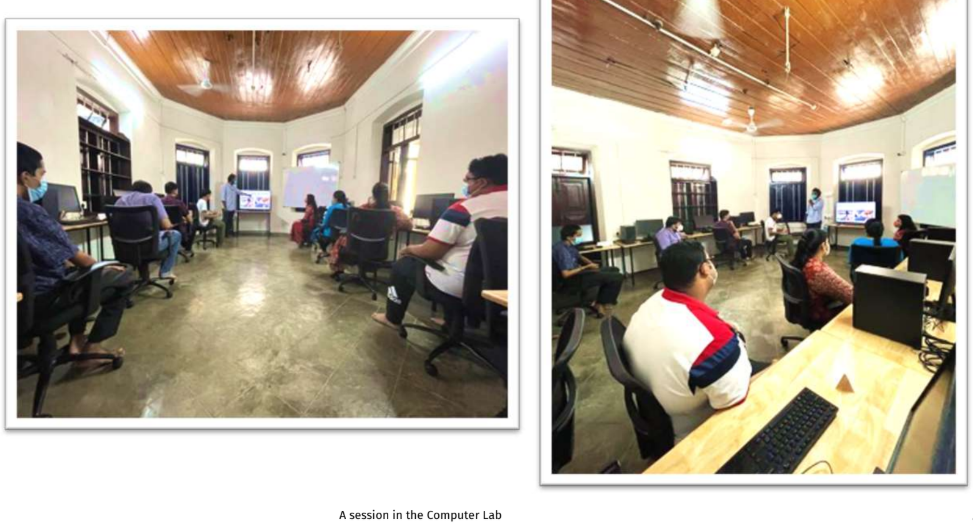
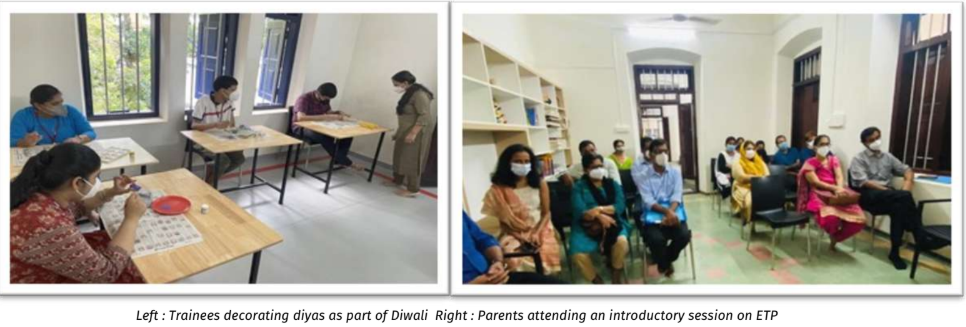
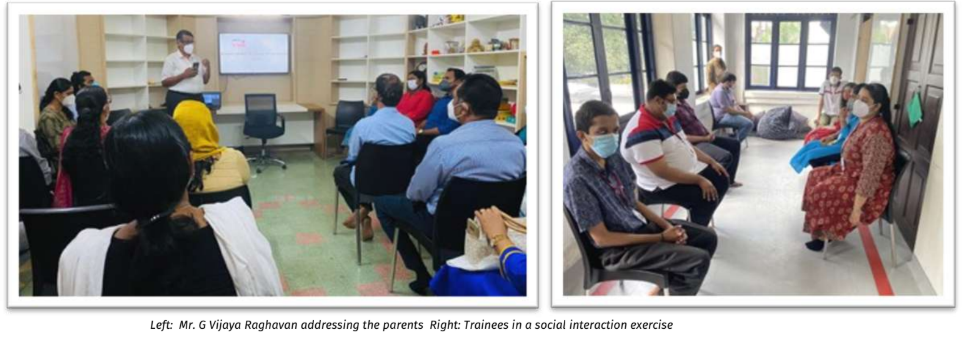

We have 8 determined trainees in our first batch of the Employability Training Program (ETP) who come with varied strengths and abilities. They have become an important part of the CADRRE family with their quirky conversations, their mandatory good morning wishes as they come in and goodbyes to all of the staff at CADRRE when they leave after the day’s training. Now a typical day at CADRRE would be incomplete without their good mornings!
The program equips young adults with Autism who have finished higher secondary school education with the skills required to be employable. This comprises of Level 1 training of 4-6 months on Life skills, Communication skills and Social skills followed by a Level 2 training of 3-6 months on job-specific skills, and a Level 3 training of 3-4 months of onsite apprenticeship at a potential employer.An Individualized Educational Plan (IEP) is prepared for each trainee after a detailed assessment by an interdisciplinary team of an occupational therapist, speech language pathologist and psychologist. The IEP consists of several areas, Life Skills, Social Skills,Communication Skills, Functional Academics. Based on the trainee’s current level, goals are set under each area by the therapists. The
IEPs are reviewed and updated every month after the therapists review the trainee’s progress toward the monthly goals.Their day starts with a workout/yoga session followed by a 45-minute session on communication and social skills where they learn about comprehending written and spoken information, pragmatic skills like initiating conversations, taking turns etc., about personal space, recognizing emotions, executive functions like visual scanning and perception. Then they have classes on IT where they work on MS Word understanding formatting tools, saving a file, working on their typing speed. This is followed by a session on Independent Living Skills where they learn different concepts that are crucial in our everyday life activities such as handling money, crossing the road, how to use an ATM machine, how to text a friend or make a call. They also have an hour every week dedicated to extra-curricular activities where they sing, dance, do stand-up comedy, sharing laughter and smiles and forming friendships.
Organisation Announcement
Three professionals have joined CADRRE family, and one member is rejoining after a break. Please join us in
welcoming them
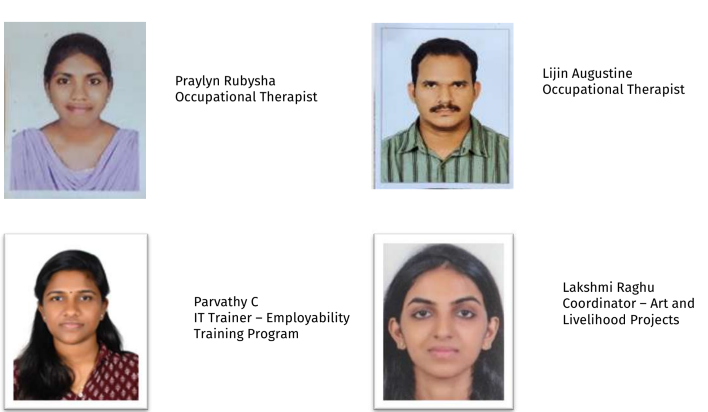
CADRRE Christmas
dance number. It was as Christmassy as it can get! It was a red-letter day for all parents to watch their son or daughter perform in front of an audience without any inhibitions. Some shed tears of joy watching their child entertaining the audience with so much grace!We had a celebration on the 23rd of December too at both our centers, students and staff all suited up in their Christmas best attire. At the PMG center, the red army of juniors bowled us over with a beautifully presented skit, the preschoolers danced to their favorite rhymes and posed for photographs with their teachers. At Sasthamangalam center, we had a dance by pre-teen students and then the students exchanged thoughtfully crafted Christmas cards to keep up the spirit of sharing and caring that
comes with Christmas. After which we had some fun games and activities planned for the staff.



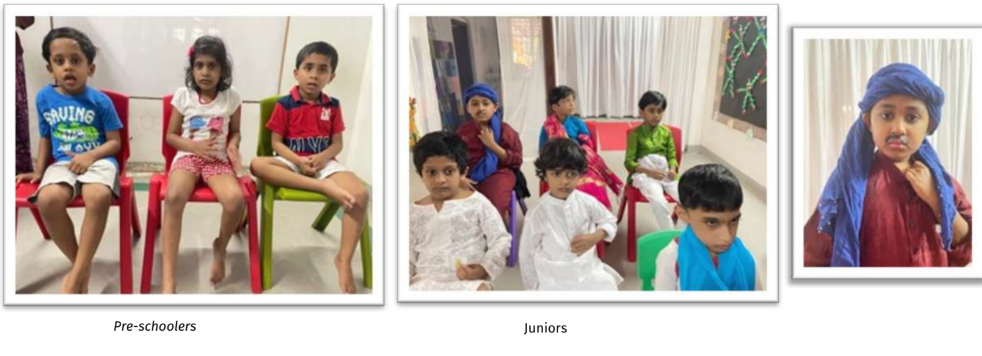

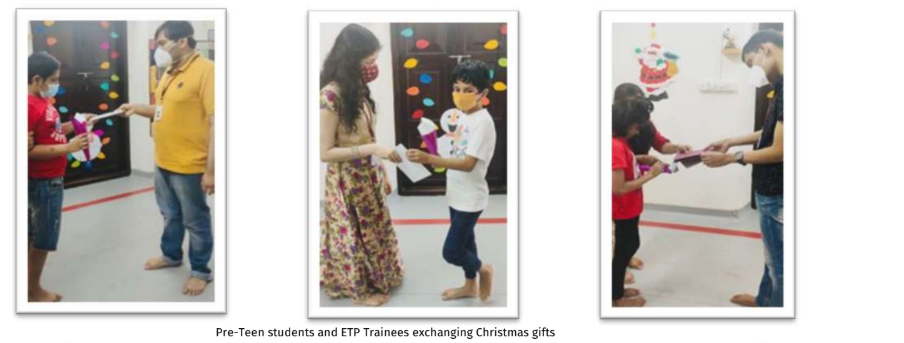
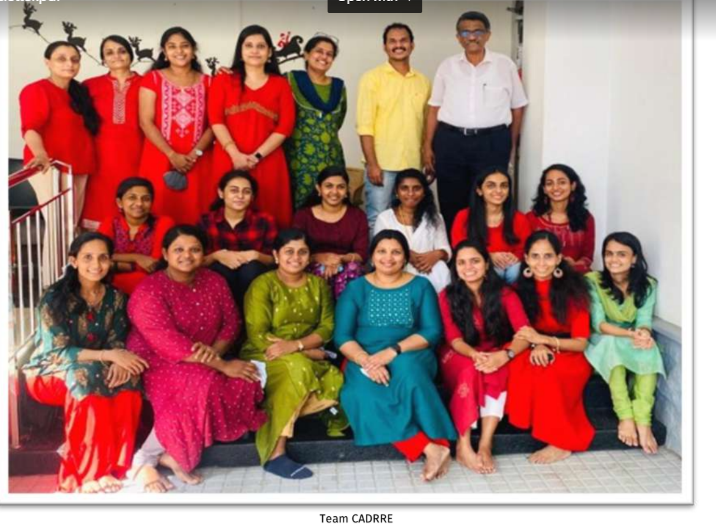
Up To Speed
This section gives you the latest updates regarding various interventions, activities/progress shown by our students
Pre- Schoolers
We opened the doors for offline classes during the last week of November, after an interval of more than 1.5 years. The children of preschool were super excited to come to school and explore the nooks and corners of the school. Direct sessions have been very effective; parents reported that children were more regulated at home and their sleep-wake cycle was more normalized. Certain areas like feeding, toileting, etc. could be better addressed. There was remarkable progress in students’ academic skills.A letterbox has been introduced to develop an interest in reading and writing. Each day one of our staff will be posting a letter for one student. The students will also be given opportunities to post letters. Oral sensory motor issues were addressed, which helped to reduce mouthing and feeding issues. Communication boards have been put up at various places inside the school to help children who are non-verbal to communicate their needs wherever they are. All the staff including admin staff, support staff and cleaning staff will be trained to communicate using these communication boards. This will be a big step in removing the barriers of communication between the verbal and non-verbal students.
Juniors
To help students transition from online to offline mode of learning, a social story called “Back to School” was shared with parents.Guidelines on how to prepare the children for offline classes were also shared. Initially the timing was set from 9am to 12:30pm, but after a few days, we slowly changed the schedule and went back to our normal timings of 9 to 3. We shared a social story incorporating Visual Schedules for children to understand their lunch time, session times, home time, etc. As a result of this,children got accustomed to the timing and routine and were ready to go back to the old timing of 9 to 3. Along with this, we had created an animated social story, which mainly included precautions for the children to take, to fight COVID. This created an awareness among children on why and how to use sanitizer and face masks. The children adapted very well to the new routine
without any major problems. The children who had joined CADRRE during the time of online sessions had only met us virtually and we anticipated some concerns when they started coming to school, but they came to school very happily and adapted to the new environment as they had become familiar with the teachers during the course of the online sessions.Both children and parents had been taught how to use AAC during the period of online sessions; this helped improve their communication noticeably. Parents understood the importance of AAC and accepted it and started using it at home regularly. When the offline sessions started, all the disciplines started using AAC to communicate with the children and it benefited children profoundly. The children started using AAC for their need-based communication. Most of the kids need minimal prompt in using AAC.Previously some children had significant challenges with visual scanning. This has improved through consistent practice and is now reflected in other skills like typing, where accuracy and words per minute have improved a lot. By doing auditory comprehension activities we found some children could read sentences and comprehend what they read in a sentence, a skill which is
challenging for most children with ASD. Some children can now hold nearly 20 items in their working memory, which was 2 items initially and are able to do it independently. Some of them are now able to narrate an entire story when given picture cards.The verbal children can support the narration with a few words too.Another noticeable change is that the students have started to interact with each other. If a child is stuck during an activity, another child is seen giving him an initiation on which card to place, which colour to choose, etc.
Another mindful moment was during the Christmas celebrations. We started preparing kids for the celebration a week before with a Christmas story so that the children can understand how and why Christmas is celebrated. We got the kids involved in decorating our school as well. We taught the kids a Christmas carol and some of them were able to sing it independently with minimal prompts. We also planned a skit. Earlier, children had sensory issues while wearing costumes for a drama or skit. But this time, they had no hesitation in dressing up for the skit. We noticed that they were happy while dressing up as the character in the skit. That was a great achievement.Each improvement we see in the kids motivates us to try and implement more ways to make them independent and confident.

Pre-Teens
All the students who had opted for offline sessions, started school with a lot of enthusiasm after being confined to their home for almost 20 months. For the whole of the first week, half an hour everyday was dedicated to an orientation session on the COVID protocol to be observed while in school, for them to dive back into their school routine. Many of them were already familiar with the terminology – COVID, virus, mask, social distancing, sanitizer- from the online sessions taken beforehand by psychologists. Most of the students could wear a mask- a couple of them are even comfortable wearing a double mask throughout school hours. Prepping for Christmas was a month-long process which the students enjoyed thoroughly. Every day half an hour was spent in making creative
Christmas ornaments which were finally put up on the day of the celebration. Students enjoyed playing with colors and its combinations to bring out the beautiful Christmas décor that lit up our facility.
Teens
The students of the teen group who had opted for offline classes were all quite eager to be back in school after the long break. They resumed their skills sessions with all enthusiasm. One of the students have improved in his sewing skills and has now learned to do backstitch designs. The students were also happy to try out their culinary skills during the ILS sessions. During these sessions, they were encouraged to prepare a salad and omelette using visual recipes, and they were able to carry out most of the steps from the visual recipe with minimal prompts. They were also engaged in preparing some decoupage samples for the new venture – Artism Studio and also in preparing decorations for the Christmas celebration. The online classes have been continuing for those who opted for it.
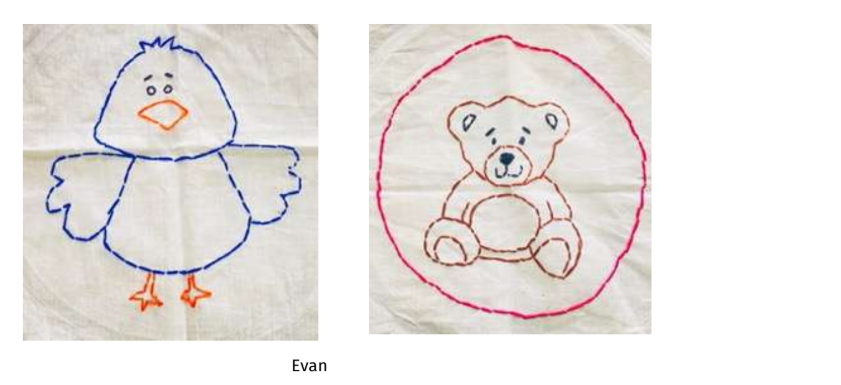
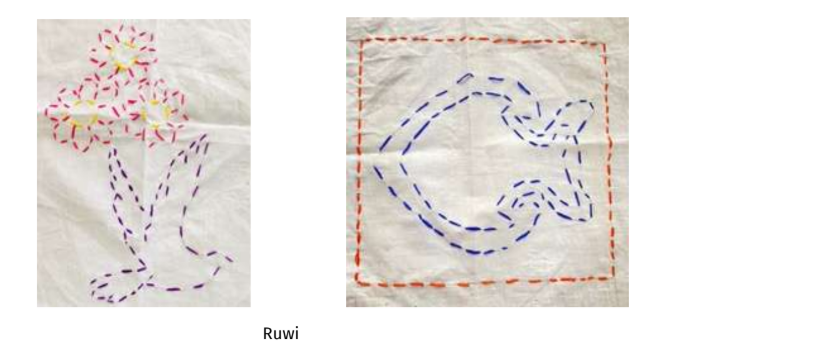
Food for Thought
“When a family focuses on ability instead of the disability, all things are possible. Love and acceptance is key. We need to interact with those with autism by taking an interest in their interests.” – Amanda Rae Ross
WOW! Moments
No matter how small the gesture, a smile, a touch or sometimes even just a nod can make a teacher’s day! This section will highlight the best moment from a compilation of a few that are recalled by teachers everyday before they begin classes Communication is an area where most children on the spectrum struggle and it places a lot of anxiety on parents and caregivers.Very often parents hope that by repeated speech and language stimulation they would be able to speak but unlike what we perceive there are more positives in trying alternative methods of communication while continuing to work on speech therapies. During one of our online sessions with a child and his parent, the child was very upset and kept crying, the teacher requested the child to use Avaz (picture and text-based alternative and augmentative communication app) to share with her what was upsetting him so she could help him. He started pointing to X-ray, doctor and temperature icons on the screen. Father could not figure out
initially and asked if he needed something to eat, for which the child clicked on the image that said, ‘You don’t understand me’. The child then clicked on the image of doctor, body parts, shoulder and medicine. So, his father tried putting some ointment on his shoulder and massaged for a while, after which he felt a lot better and attended the class with enthusiasm. The father was happy as his son was able to communicate his need. Little victories like this always feels like a great achievement when you have put the effort in over time to build their confidence and reassurance.
A Facebook Live on Helping Students Transition Back to School after the Lockdown
Returning to school after the long break due to the pandemic can be challenging for children. For children with Autism, transitions like this can be even harder. Routines are important for them, and the long absence from the classroom, the need to wear masks and other changes mean they have to learn an entirely new school routine.
To help anxious parents we conducted a Facebook Live on the 6th of November 2021 with simple actionable and effective tips on transitioning back to school. The session was taken by Anuja Sudheer, Speech Language Pathologist with CADRRE. You can watch the session here. Also please do follow our Facebook page for more such updates and sessions.
Ongoing Intervention for School-going Children
Children with minimal to mild features of Autism Spectrum Disorder (ASD) develop skills, but the progress may be slow or different to what is anticipated. They may be able to attend a regular school but may need some extra help with communication, social interaction, deviant language, sensory difficulties and other cognitive impairment. CADRRE introduced an Ongoing Intervention Program to support school-going children with Autism and associated difficulties. The program aims at helping children with their language development,communication, social interaction, fine and gross motor challenges, while attending regular school. The intervention will be given for
speech, life skills, social skills, and academics based on the requirement of the child and the Individual Education Plan.The intervention will be for 2 days per week / 4 days per week depending on the child’s need. The intervention will be based on the language and cognition levels of the child and could be group learning or one-on-one. The program is conducted after school hours with options for online and in-person sessions. The program is expected to help the child to better adapt to the school environment and hone the areas in which he/she may have talent. Currently, four children are enrolled in the program. Children who are functioning well in certain areas may have some hidden skills. To identify their hidden skills, art, music and ICT sessions are also incorporated in
our program.

Art Corner
Each artwork is the expression of students from different grades. The children are guided by the teachers to imagine and explore different media through art

